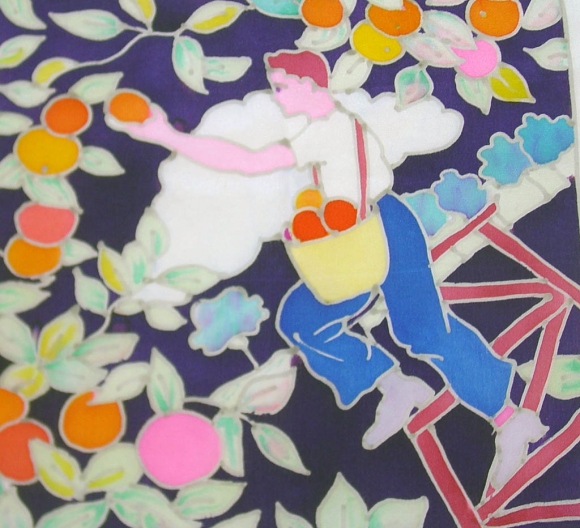
Scarf Artist: Clara Gardon New York City, 1953 Silk, hand painted Collection of Yeshiva University Museum. Gift of the Artist.
I was recently giving a tour of an installation of clothing and textiles from our collection to a group of college women. One item on my tour was a scarf made in 1953, decorated with scenes celebrating Israel. I pointed out a detail of the scarf – a young man picking oranges. One of the young women asked “what do oranges have to do with Israel?” The question startled me. When I was growing up here in America, Jaffa oranges were ubiquitous, shining brightly on shelves in the produce section, each individually wrapped in paper. But I realized that I hadn’t seen them in years. I explained that Jaffa oranges were one of Israel’s popular exports, that our collection includes a number of related items, and continued the tour. Afterwards, I began to do some poking around (scholarly research by another name).
Jaffa oranges were a particular variety. They had a uniform shape and thick skins that were difficult to bruise and therefore were ideal for commercial purposes at a time when uniformity and the ability to survive transport looking attractive were valued characteristics. These oranges had few seeds, and a uniform, pleasant taste. It was first produced for export in Jaffa, hence its name. Although these oranges were cultivated in and around Israel for decades, after the 1960s agriculture became less important to the Israeli economy. The scarf that started this investigation of Jaffa oranges was painted by Clara Gardon in a technique known as gutta resist, a form of silk painting. Gutta is derived from Indonesian rubber trees. It is applied to silk, which is then dyed. When the dye has set, the gutta is removed from the fabric by dry cleaning. This scarf was marketed for the Womens International Zionist Organization (WIZO). Details include a young man carrying an Israeli flag, and a couple folk dancing.
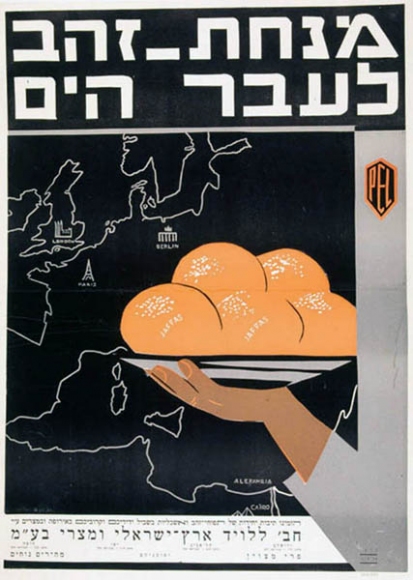
Advertisement for Jaffa oranges Creator: ArtistL Buki el-Hanani. Israel, ca. 1930s. Collection of Yeshiva University Museum Gift of the Jesselson Family
Marketing products involves advertising, and Yeshiva University Museum’s collection includes a poster advertising Jaffa oranges. A hand holds a plate of oranges against a map showing Cairo, Alexandria, Berlin, Paris and London. The caption refers to golden gifts. Lloyds suggests people send oranges or grapefruits to their friends and relatives.
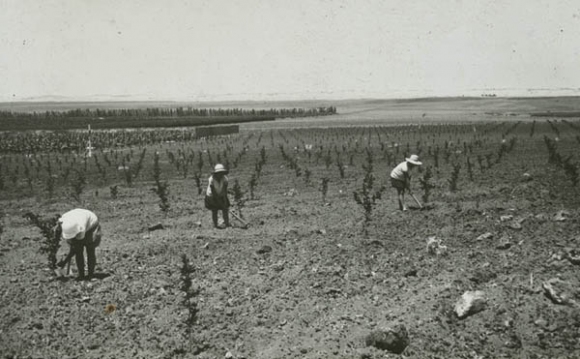
Planting an orange grove, glass lantern slide, Israel, ca. 1930s, Collection of Yeshiva University Museum, Gift of Av Rivel
American children were introduced to the agricultural importance of oranges for Israel. Among the items in the YU Museum Collection is a group of glass lantern slides with images from the 1930s that included Israeli industry, recreation, medicine, and agriculture. These slides were used at Cejwin Camps in Port Jervis, New York, to familiarize American children with Israel’s accomplishments. Three scenes show stages of the orange industry: planting an orange orchard; sorting oranges; and packing oranges.
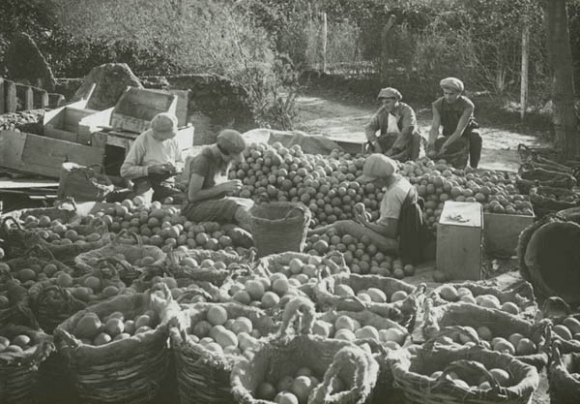
Sorting oranges, glass lantern slide, Israel, ca. 1930s, Collection of Yeshiva University Museum, Gift of Av Rivel
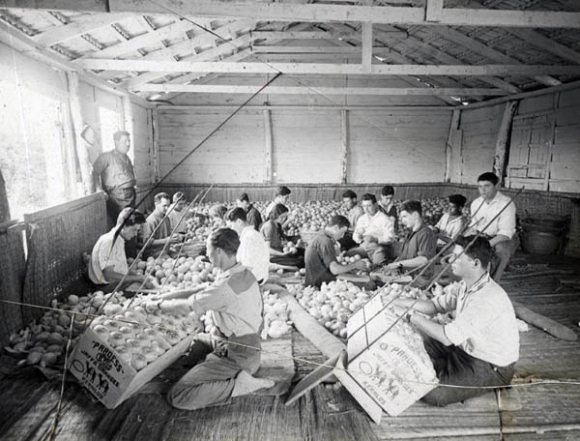
Packing oranges, glass lantern slide, Israel, ca. 1930s, Collection of Yeshiva University Museum, Gift of Av Rivel
The importance of the citrus crop (which included grapefruits and lemons as well as oranges) to the Israeli economy is attested to by other items in our collection. Large public exhibitions of art, industry, fashion and trade goods, called expositions, were popular. In 1952, artist Ismar David (1910-1996) designed an Israel Exposition for the State of Israel Bonds. The Exposiiton, produced by Industrial Displays of New York, was located at 22 West 48th Street at Rockefeller Plaza. The citrus display was located between canning and wines and liquors.
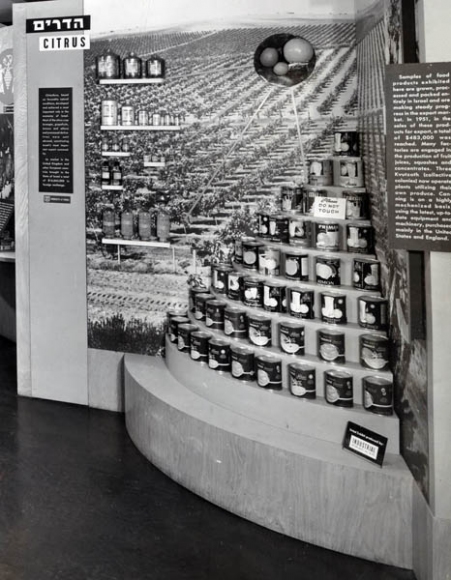
Photograph of the Israel Exposition, New York, 1952
Someone with whom I recently discussed Jaffa oranges just called to say she saw a sign advertising them in a NY grocery store, so pardon me, but I am running out in the hope of being able to introduce my child to this luscious segment of my childhood!
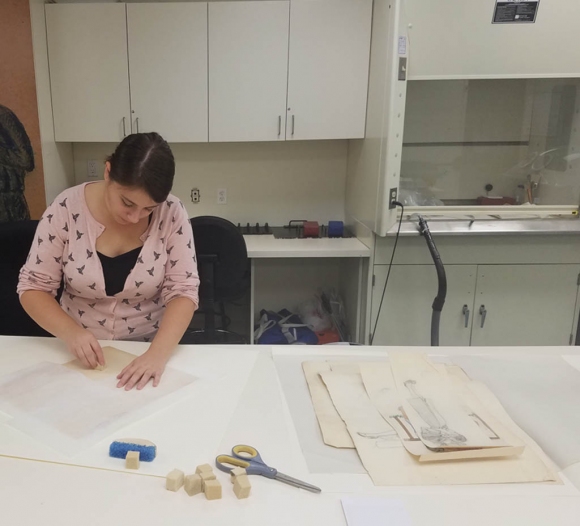
Comments
Share Your Comments: